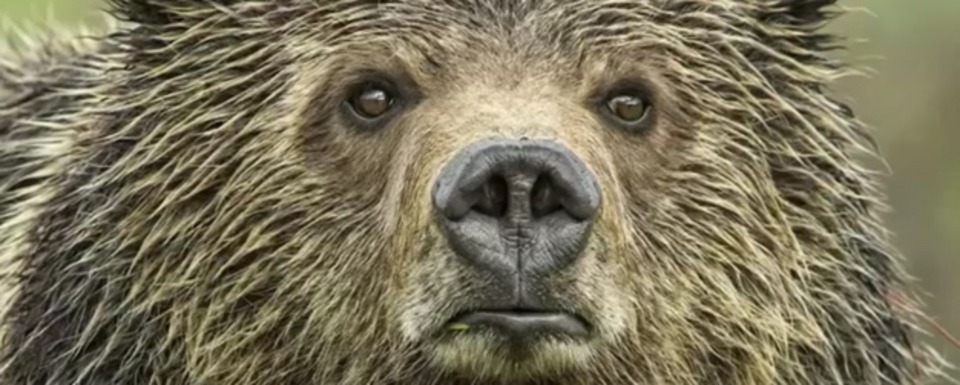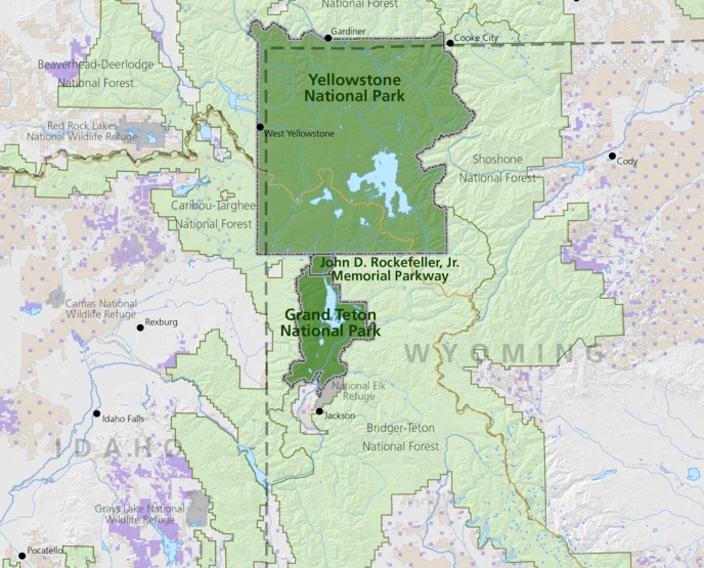About Mountain Journal
Meaningful public-interest journalism at the intersection of people and nature in America's wildest, most iconic ecosystem

Who We Are
EVERY DAY, OUR REPORTING STARES INTO THE EYES OF WILDNESS. Mountain Journal is headquartered in the Greater Yellowstone Ecosystem, the wildest region in the Lower 48 states and a nexus for understanding the inter-relationships between people and nature in the American West. Greater Yellowstone, as a region, is considered a global icon, destination, and bellwether for thinking about the persistence of healthy landscapes in the 21st century. With most of Greater Yellowstone being federal public land, that means it belongs to all citizens of the United States. No other news entity in the country is bringing the importance of Greater Yellowstone to the forefront as we do.
As a non-profit 501 (c)(3), our mission of public-interest journalism is simple. Mountain Journal serves as both a journalistic watchdog and celebrant of Greater Yellowstone. What happens here has implications for other regions. With a strong readership in the Rocky Mountain region, every US state, and 223 countries and territories around the world, we are devoted to telling stories informed by truth and facts. We do it in a way that advances civil, scientifically-informed discussions about the role/obligation that government and private interests play in serving a larger—and greater—public purpose, benefitting humans and non-human species.
In order for us to succeed, we need your financial support. We are profoundly grateful to readers who believe that public-interest journalism that understands the connection between ecology and economy is important.
For examples of how our stories explore the big picture and spur important discussion regionally and nationally, read our pieces on the impact of unprecedented human population pressure on Greater Yellowstone; our in-depth report on climate change; our reporting on the ongoing slaughter of Yellowstone bison; and our series on Chronic Wasting Disease` that has been cited nationally as the disease reaches 26 states—and counting. Click on the Mountain Journal icon on the top left of your screen and scroll through our latest stories.

It starts with with a relentless focus on reporting facts that can be verified. We believe that better-informed citizens and decision makers are the foundation of our democracy and leads to better protection of the natural environment we share in common.
Someone asked us recently: "What makes the Greater Yellowstone Ecosystem the wildest landscape in the Lower 48?" This is how we replied and it helps to answer the question of why Mountain Journal exists.
"Our answer is an easy one," we said. "Greater Yellowstone still has all of its original megafauna and other species that were here before Europeans arrived on the continent. Why? Because the landscape is, large, still intact and unfragmented by human development that has led to species loss elsewhere. Greater Yellowstone has a stable and fairly large grizzly bear population, something that doesn't exist in other landscapes because it's extraordinary difficult to sustain; certainly not in landscapes that also have wolves and most importantly, three of the longest-known, still-functioning wildlife migrations (elk, mule deer and pronghorn) left on the planet. Greater Yellowstone has imperiled wolverines, Canada lynx, and black-footed ferrets. It has wild genetically-pure bison, descended from a mere handful that survived the purge of 35 million. It has trumpeter swans that, like bison, escaped a close brush with extinction. It has undammed rivers, the last major wild reservoir for Yellowstone cutthroat trout and healthy cold-water fish populations, it has a roadless area considered the most remote in the Lower 48, it has geysers (the largest concentration globally) while elsewhere in the world most such geothermal phenomena have been destroyed.
We also pointed out that Greater Yellowstone is a homeland for indigenous communities; it has people who make their living working the land; it has old timers and newcomers; it has people of diverse affinities and identities who share a sense of place in common. And they are dealing with change.
At present, Greater Yellowstone has around 440,000 permanent residents set within 22.5 million acres, equal to about the size of South Carolina. Millions of people come here because it has wildness as no other—in fact, the wildest single mosaic of interconnected public and private lands in the Lower 48 with aspects that make it one of the wildest in the world, still capable of supporting all of the wonders above. The question is: for how long?
WE NEED YOUR HELP TO CONTINUE TELLING STORIES THAT LAY OUT WHAT'S AT STAKE OR GREATER YELLOWSTONE WILL BECOME JUST LIKE EVERYWHERE ELSE
Besides providing compelling stories, Mountain Journal is dedicated to public-interest journalism, advancing the principles of civility, promoting honest discussions informed by facts, demanding accountability from those in positions of power and influence, and delivering a thoughtful, truthful analysis to our readers.
We believe storytelling is vital to enlightenment; it can make visible the invisible and bring illumination to aspects of human culture and landscape that have otherwise remained in the shadows. We believe in confronting serious issues and, at the same time, the need for bringing levity as necessary relief, art for inspiration, and listening as a way of reminding us why we live here or choose to make this unparalleled corner of the West our destination.
Think of Mountain Journal as the celebration of a region to which all Americans belong, a broad sweep of public and private land with many parts that transcend artificial boundaries. How we think about and engage in issues here has implications for the future.
Think of Mountain Journal as the celebration of a region to which all Americans belong, a broad sweep of public and private land with many parts that transcend artificial boundaries. How we think about and engage in issues here has implications for the future.
Sign up by clicking here to receive our monthly digest of stories you won't want to miss. And we would be ever grateful for your generous support so we can continue to keep you informed.
PRIVACY POLICY
INFORMATION COLLECTION AND USE
While using our Service, we may ask you to provide us with certain personally identifiable information that can be used to contact or identify you. Personally identifiable information may include, but is not limited to, your email address and name (“Personal Information”).
We collect this information for the purpose of providing the Service, identifying and communicating with you, responding to your requests/enquiries, and improving our services.
COMMUNICATIONS
We may use your Personal Information to contact you with newsletters, marketing or promotional materials and other information that may be of interest to you. We ask you to voluntarily sign up for our newsletter. We will never sell or share your information with a third party. You may opt out of receiving any, or all, of these communications from us by following the unsubscribe link or instructions provided in any email we send.
EDITORIAL INDEPENDENCE POLICY
Mountain Journal retains full authority over editorial content to protect the best journalistic and business interests of our organization. We maintain a firewall between news coverage decisions and sources of all revenue. Acceptance of financial support does not constitute implied or actual endorsement of donors or their products, services or opinions.
We accept gifts, grants and sponsorships from individuals and organizations for the general support of our activities, but our news judgments are made independently and not on the basis of donor support.
Mountain Journal may consider donations to support the coverage of particular topics, but our organization maintains editorial control of the coverage. We will cede no right of review or influence of editorial content. Our organization will make public all donors who give a total of $1,000 or more per year. We will accept anonymous donations for general support only if it is clear that sufficient safeguards have been put into place that the expenditure of that donation is made independently by our organization.
Adopted by the Mountain Journal Board of Directors on October 27, 2017.
Contribute to Mountain Journal
Support UsNews By Region
The Greater Yellowstone Ecosystem as a window on the West
Our Greater Yellowstone Ecosystem is expansive. Browse the articles you are most interested in by clicking the geotags on the map.
